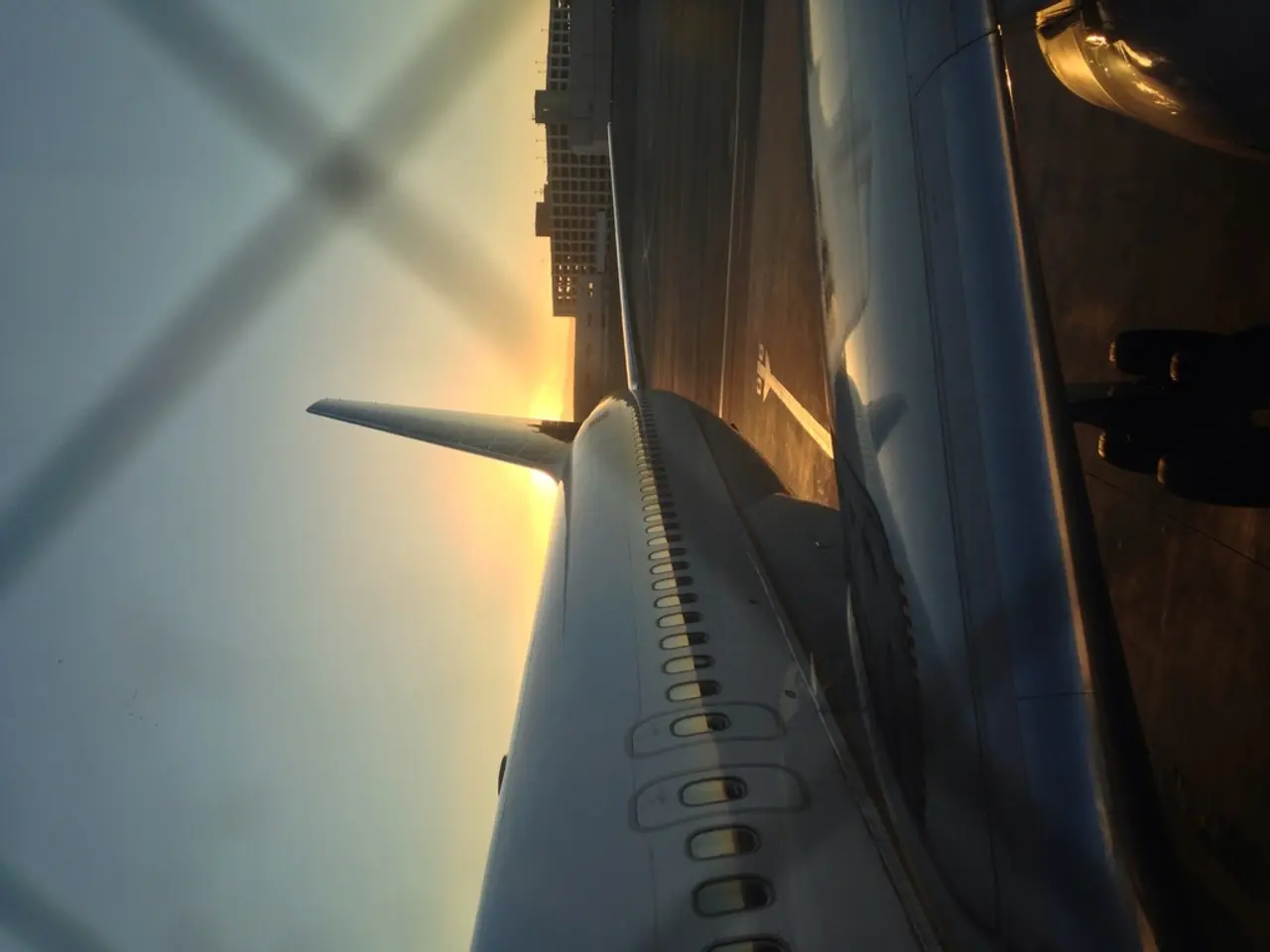Delving into Solutions Beyond U-Space: A Look at Integration and Segregation Resolutions
As several countries consider expanding the responsibilities of a Single CIS provider to serve operators outside U-space, it's important to note that alternatives to full U-space implementation for large-scale UAS Beyond Visual Line of Sight (BVLOS) operations do exist. These alternatives are being explored to ensure the safe integration of unmanned aviation with manned aircraft.
Potential Alternatives and Strategies
The Federal Aviation Administration's (FAA) BVLOS Notice of Proposed Rulemaking (NPRM) highlights that full DAA standards, especially for UA-to-UA tactical avoidance, remain unresolved. In the meantime, drone operations often rely on strategic deconfliction—planning flight paths to avoid conflicts—and maintaining mandatory safe separation from manned aircraft through procedural means or technology when DAA is unavailable.
Providers like Airwayz offer AI-driven UAS Traffic Management (UTM) solutions that can create temporary U-Space zones for specific operations. These zones are dynamically adjusted based on risk assessments and allow multiple operators to safely share airspace with cooperative management, tailored boundaries, and flight path prediction.
The FAA is considering new portable electronic conspicuity devices for manned aircraft to improve cooperative detection in lieu of ADS-B transponders on drones. This aids in maintaining situational awareness and enforces clear right-of-way rules, which state unmanned aircraft generally must yield to cooperative manned aircraft but may have priority over non-cooperative ones in some conditions.
In some countries, drone flights are integrated into controlled airspace via request-and-approval systems, such as Brazil's SARPAS, which manage drone operations by classifying them as integrated, accommodated, or segregated relative to manned traffic. Segregation involves closing or restricting airspace to other traffic for drone missions, a practical albeit conservative alternative before full U-space capabilities.
Potential Service Providers
Key service providers like Airwayz and UAVOS are innovating in AI-driven UTM and BVLOS capable UAVs, thereby enabling safer large-scale BVLOS operations. Airwayz offers AI-driven UTM and UAV Service Supplier Platform (UUSP) with capabilities such as dynamic temporary U-space zones and flight path prediction to manage shared airspace for BVLOS safely. UAVOS provides advanced UAV platforms equipped with satellite communications to support BVLOS operations and collaborates on flight control systems aimed at multi-mission capabilities, which can underpin safer BVLOS integration.
Under the FAA's NPRM frameworks, third-party UAS Traffic Management service providers will be regulated and approved to supply services like flight planning, deconfliction, and airspace integration, setting a precedent for alternative systems pending full U-space.
Summary
Before full U-space deployment, alternative strategies focus on risk-based strategic deconfliction, AI-enhanced temporary controlled zones, electronic conspicuity, procedural right-of-way rules, and airspace coordination systems. These alternatives provide practical methods to safely integrate large-scale UAV flights with manned aircraft while full U-space systems are still under development and implementation.
The UK Civil Aviation Authority released a policy concept for BVLOS flights in April 2023, outlining a safety-focused approach from segregation to accommodation to integration. ANSPs may be impacted by the U-space implementation, as discussed in Toby's recent article: "The effects of the U-space implementation for ANSPs".
- The FAA's highlight in the BVLOS Notice of Proposed Rulemaking (NPRM) emphasizes that full DAA standards are yet to be resolved, and in the interim, drone operations may rely on strategic deconfliction and technology for maintaining safe separation from manned aircraft.
- Providers like Airwayz offer AI-driven UAS Traffic Management (UTM) solutions that can establish temporary U-Space zones for specific operations, promoting safe integration of unmanned aviation with manned aircraft.
- The FAA is considering new portable electronic conspicuity devices for manned aircraft to improve cooperative detection, which is vital in maintaining situational awareness and enforcing clear right-of-way rules.
- In some countries, drone flights are integrated into controlled airspace via request-and-approval systems, such as Brazil's SARPAS, which manage drone operations by classifying them according to their relation to manned traffic, including segregation methods that close or restrict airspace for drone missions.
- Service providers like Airwayz and UAVOS are innovating in AI-driven UTM and BVLOS capable UAVs, providing safer large-scale BVLOS operations through AI-driven UTM systems, dynamic temporary U-space zones, collaborative flight control systems, and satellite communications.




